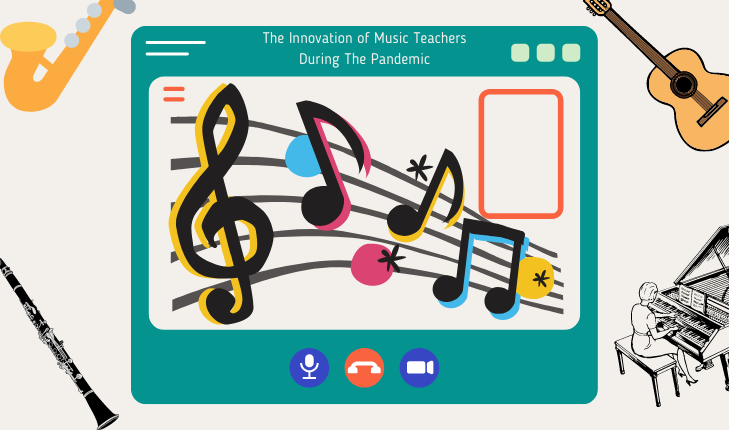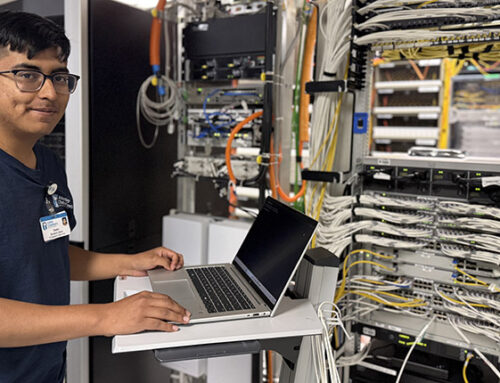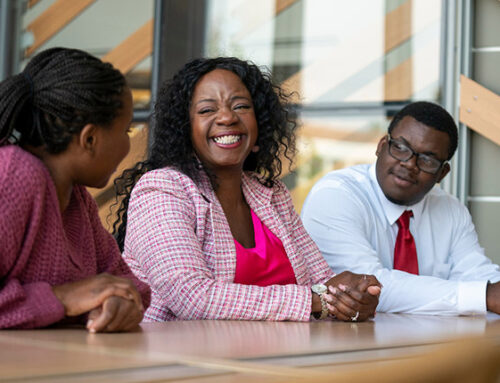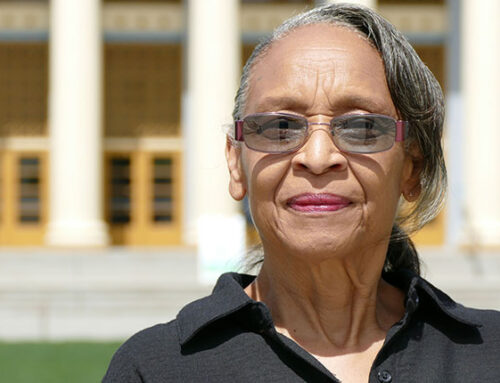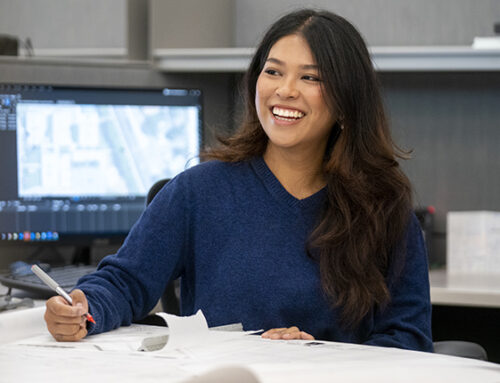When the pandemic hit and schools and universities across the country switched to online learning, music educators scrambled to find new and alternative ways to teach their students. No longer able to gather in a room to collaborate, music educators needed to find innovative ways to teach their students.
Aaron Luna, a student in Fresno State’s Doctoral Program in Educational Leadership who is director of bands at Divisadero Middle School and an adjunct professor of the Music Department at Fresno State, was one of those music educators who had to make changes in his classroom to make sure his students’ musical growth wasn’t hindered.
Luna’s district provided a new music program that allowed his students to hear how the music he assigned is supposed to be played on their specific instrument. Although this gave his students a sense of normalcy during a time when they weren’t together, there were challenges.
“It was really cool and interactive but for students that have a bad Internet connection it was really difficult,” Luna said. “And, for me as an educator as well, I think it had a huge impact on their musical growth and their performance outcomes.”
To combat this, Luna decided to go back to the roots of music and have conversations with his students about race and culture as it pertains to music, including jazz, Bali music and mariachi.
“I think it’s important to have music within the curriculum that reflects the student demographic so the students are able to see or make cultural connections to the music,” Luna said.
Dr. Nicholas Fuentes, a recent Fresno State graduate and now vice president for community education and enrichment at the Santa Barbara Symphony, oversees music education programs targeted at students in third grade and up.
Before the pandemic the Santa Barbara Symphony offered a hands-on approach to help aspiring young musicians in the community.
“We do something called the music van which delivers instruments to schools and gives a presentation. Most kids have never seen a French horn or timpani before so this is an opportunity for them to see it, hold it, play it, touch it, and it really helps generate interest in the kids. We’re also running programs where we hold a symphony for all of the elementary school kids in town. We’ll do a performance and there’s instruction that goes along with it, talking about what the conductor does, what the different instruments are. So it’s an educational session but also a musical performance.”
During the pandemic the symphony decided to make changes that allowed students to still learn and get the experience of their programs without actually leaving their classroom. The symphony put together a virtual program in the place of the music van that allowed students to learn about all of the different instruments of the symphony.
These innovative teaching methods that resulted from the pandemic have brought to the forefront some new tools to help students succeed—some of which may remain part of the curriculum going forward.
(By Devon Hunt, creative writing student)

